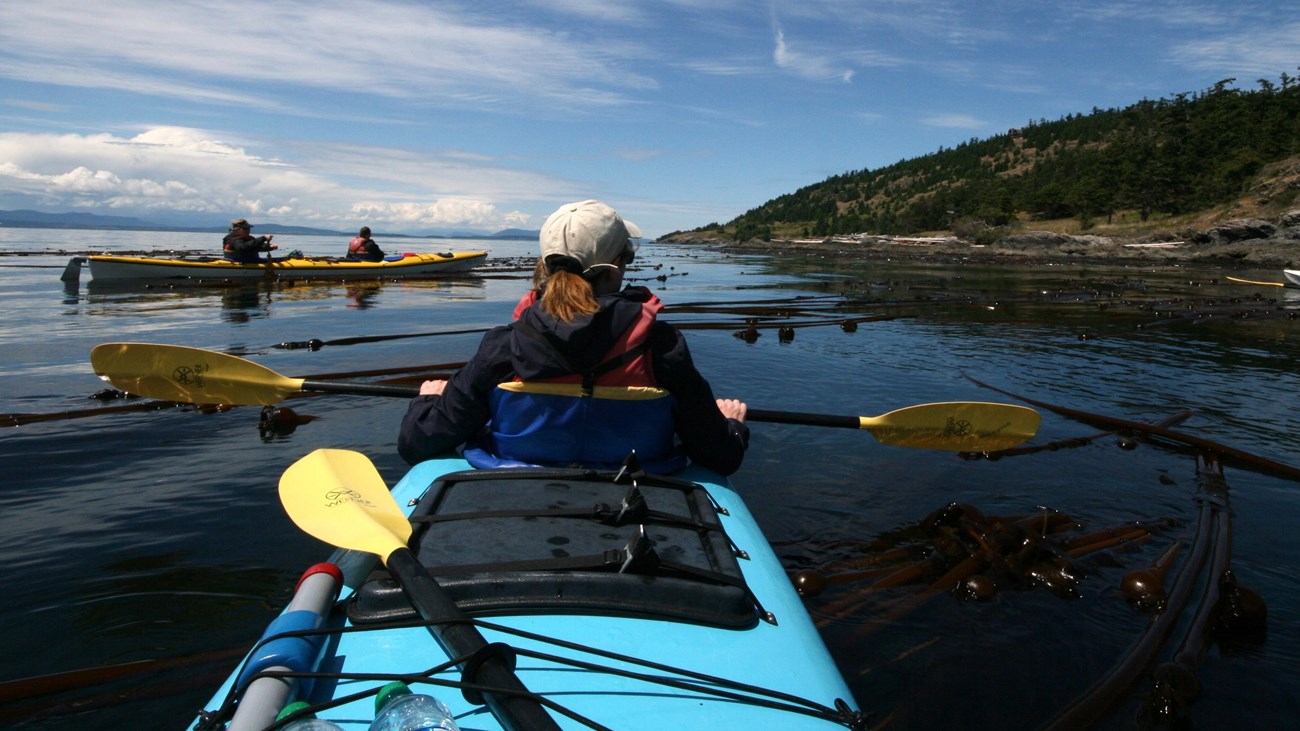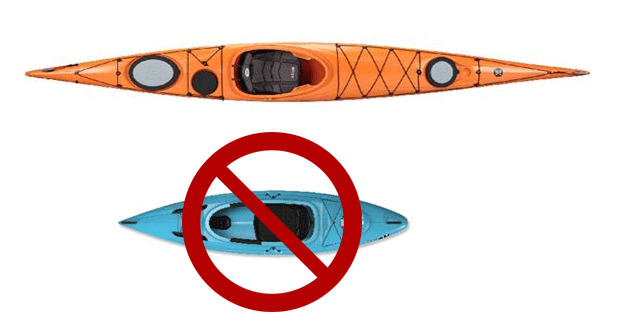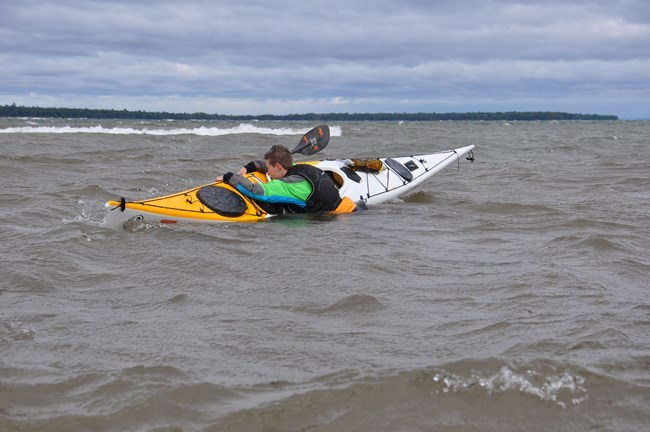Last updated: December 10, 2024
Thing to Do
Go Kayaking

Kayak
Many people come to San Juan Island seeking the adventure of exploring the area by boat. Sea kayaks are very popular for travel among the islands. Operating a small craft on the Salish Sea is fun and exciting, but can also be extremely hazardous when weather conditions become unfavorable.
Paddlers must know their equipment, know their limits, obtain a current weather forecast, and respect the ever-changing environment of Puget Sound.
Launches, Locations, & Parking
There are areas to launch kayaks in both American Camp and English Camp.
Kayak launching is prohibited at English Camp to protect park cultural and natural resources.
At American Camp, visitors can launch from Fourth of July Beach and South Beach. Vessels can be carried from the parking lot and launched directly from shore.
What To Expect Before You Arrive
San Juan Island is renowned for it's water resources including the beaches, lighthouses, and island camping. Before you get to the park make sure you have the right equipment. Because of Puget Sound's power and unpredictability, the National Park Service does NOT recommend the use of small open boats, canoes, open cockpit or sit-upon kayaks, and paddleboards for travel between islands. A sea kayak is the recommended kayak that should be used in the San Juan Islands.
Equipment
Do you have the proper equipment for kayaking on the Salish Sea?
-
PFD (Personal Flotation device) / Life jacket- required
-
Whistle or Air horn- required
-
Wet suit or dry suit
-
Spray skirt
-
Paddle Float
-
Bilge Pump
-
Marine/VHF Radio
Rescue Techniques
Can you save yourself?
Help is not a phone call away! Cell phone service is spotty within the park boundaries and even worse on the water. Even if you are able to get a 911 call out, help is still far away, 30 minutes at the least. Rescue time of 60-90 minutes or longer is more likely. If the weather is rough, no one will be able to respond until the weather calms down.
You need to be able to perform a self rescue. Read, research, and take lessons. Then practice, practice, practice! -
Always wear your PFD (life jacket). Wear a wetsuit. Cold water kills!
-
Paddle with others.
-
Make sure they know how to perform rescues too.
-
Leave a float plan with someone who cares about you. Don't forget to tell them when you get back so they don't start a search.
Many people come to San Juan Island seeking the adventure of exploring the area by boat. Sea kayaks are very popular for travel among the islands. Operating a small craft on the Salish Sea is fun and exciting, but can also be extremely hazardous when weather conditions become unfavorable.
Paddlers must know their equipment, know their limits, obtain a current weather forecast, and respect the ever-changing environment of Puget Sound.
At English Camp, visitors must park in the parking lot and carry their kayaks to the dinghy dock to launch. It is prohibited to launch any vessel from the beach to protect sensitive ecological and archaeological resources.
At American Camp, visitors can launch from Fourth of July Beach and South Beach. Vessels can be carried from the parking lot and launched directly from shore
Go Kayaking
Many people come to San Juan Island seeking the adventure of exploring the area by boat. Sea kayaks are very popular for travel among the islands. Operating a small craft on the Salish Sea is fun and exciting, but can also be extremely hazardous when weather conditions become unfavorable.
Paddlers must know their equipment, know their limits, obtain a current weather forecast, and respect the ever-changing environment of Puget Sound.
Launches, Locations, & Parking
There are areas to launch kayaks in both American Camp and English Camp.
At English Camp, visitors must park in the parking lot and carry their kayaks to the dinghy dock to launch. It is prohibited to launch any vessel from the beach to protect sensitive ecological and archaeological resources.
At American Camp, visitors can launch from Fourth of July Beach and South Beach. Vessels can be carried from the parking lot and launched directly from shore.

NPS
What To Expect Before You Arrive
San Juan Island is renowned for it's water resources including the beaches, lighthouses, and island camping. Before you get to the park make sure you have the right equipment. Because of Puget Sound's power and unpredictability, the National Park Service does NOT recommend the use of small open boats, canoes, open cockpit or sit-upon kayaks, and paddleboards for travel between islands. A sea kayak is the recommended kayak that should be used in the San Juan Islands.
Equipment
Do you have the proper equipment for kayaking on the Salish Sea?
-
PFD (Personal Flotation device) / Life jacket- required
-
Whistle or Air horn- required
-
Wet suit or dry suit
-
Spray skirt
-
Paddle Float
-
Bilge Pump
-
Marine/VHF Radio

NPS
Rescue Techniques
Can you save yourself?
Help is not a phone call away! Cell phone service is spotty within the park boundaries and even worse on the water. Even if you are able to get a 911 call out, help is still far away, 30 minutes at the least. Rescue time of 60-90 minutes or longer is more likely. If the weather is rough, no one will be able to respond until the weather calms down.
You need to be able to perform a self rescue. Read, research, and take lessons. Then practice, practice, practice!
-
Always wear your PFD (life jacket). Wear a wetsuit. Cold water kills!
-
Paddle with others.
-
Make sure they know how to perform rescues too.
-
Leave a float plan with someone who cares about you. Don't forget to tell them when you get back so they don't start a search.
